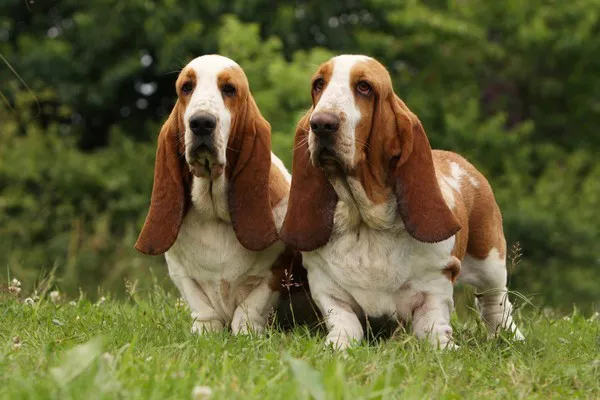Introduction
Training a Basset Hound to track can be a rewarding and fulfilling experience for both you and your furry companion. Basset Hounds are known for their exceptional tracking abilities, thanks to their keen sense of smell and determination. Whether you plan to participate in tracking competitions or simply want to engage your Basset Hound in a stimulating activity, this article will provide you with a comprehensive guide on how to train your Basset Hound to track effectively. We will cover everything from understanding the breed’s characteristics to the step-by-step training process, ensuring that you have all the necessary knowledge to succeed.
Understanding the Basset Hound
Before diving into the training process, it’s essential to familiarize yourself with the Basset Hound breed and its unique characteristics. Basset Hounds are scent hounds originally bred for tracking small game, such as rabbits and hares. They possess an extraordinary sense of smell, second only to the Bloodhound. Additionally, Basset Hounds have a distinctive physical appearance, characterized by their long, droopy ears and low-to-the-ground stature.
Establishing a Bond
Establishing a strong bond with your Basset Hound is crucial for successful training. Spend quality time together, engaging in activities that promote trust and companionship. Regular exercise, playtime, and positive reinforcement will help strengthen your bond and create a solid foundation for the training process.
Basic Obedience Training
Before delving into tracking-specific training, it’s important to ensure that your Basset Hound has a solid foundation in basic obedience commands. These commands will serve as building blocks for more advanced tracking training. Teach your Basset Hound commands such as sit, stay, come, and heel. Use positive reinforcement techniques, such as treats and praise, to encourage desired behavior. Consistency and patience are key during this stage.
Introducing the Scent
The next step in training your Basset Hound to track is introducing them to the scent they will be tracking. Start by using a scent article, such as a cloth or a piece of fabric, that has been rubbed against the target scent. This could be the scent of a specific person, an object, or an animal. Allow your Basset Hound to sniff and become familiar with the scent article, associating it with positive experiences, such as treats or playtime.
Building a Tracking Trail
Once your Basset Hound is comfortable with the scent, it’s time to start building a tracking trail. Begin in a controlled environment, such as your backyard or a quiet park, where distractions are minimal. Start by dragging the scent article along the ground for a short distance, creating a visible trail for your Basset Hound to follow. Gradually increase the length of the trail as your dog becomes more proficient.
Encouraging the Tracking Behavior
As your Basset Hound follows the tracking trail, encourage and praise their progress. Use verbal cues, such as “track” or “find it,” to signal that they should focus on the scent and continue tracking. Reward your dog with treats and enthusiastic praise whenever they successfully follow the trail. This positive reinforcement will strengthen the association between the scent and the rewarding experience, further motivating your Basset Hound to track.
Introducing Distractions
Once your Basset Hound becomes adept at following a straight tracking trail, gradually introduce distractions to mimic real-world scenarios. Start by adding minor distractions, such as other scents or objects, along the tracking trail. This will teach your dog to stay focused on the target scent, even when other smells are present. Over time, increase the level of distractions, making the training sessions more challenging.
Progressing to Different Environments
To ensure that your Basset Hound can track effectively in various environments, gradually transition from familiar settings to new locations. Introduce different terrains, such as grassy fields, wooded areas, or urban environments, where your dog will encounter different scents and challenges. By exposing your Basset Hound to diverse environments, you will enhance their tracking abilities and adaptability.
Advanced Training Techniques
Once your Basset Hound has mastered the basics of tracking, you can progress to more advanced training techniques. One such technique is “scent discrimination,” where your dog learns to differentiate between multiple scents and track specific ones. This can be achieved by using multiple scent articles during training sessions and rewarding your dog only when they track the designated scent.
Tracking Competitions and Activities
Participating in tracking competitions or engaging in tracking activities can be a fun way to challenge and showcase your Basset Hound’s tracking skills. Look for local tracking events or organizations that offer training opportunities and competitions. These events provide a structured and supportive environment for you and your Basset Hound to further develop your tracking abilities.
Conclusion
Training a Basset Hound to track requires patience, consistency, and a deep understanding of the breed’s characteristics. By establishing a strong bond, focusing on basic obedience training, introducing the scent, and gradually building tracking skills, you can unlock the full potential of your Basset Hound’s tracking abilities. Remember to keep training sessions positive and enjoyable, using rewards and praise to motivate your dog. With dedication and perseverance, you and your Basset Hound can embark on an exciting journey of tracking success.


